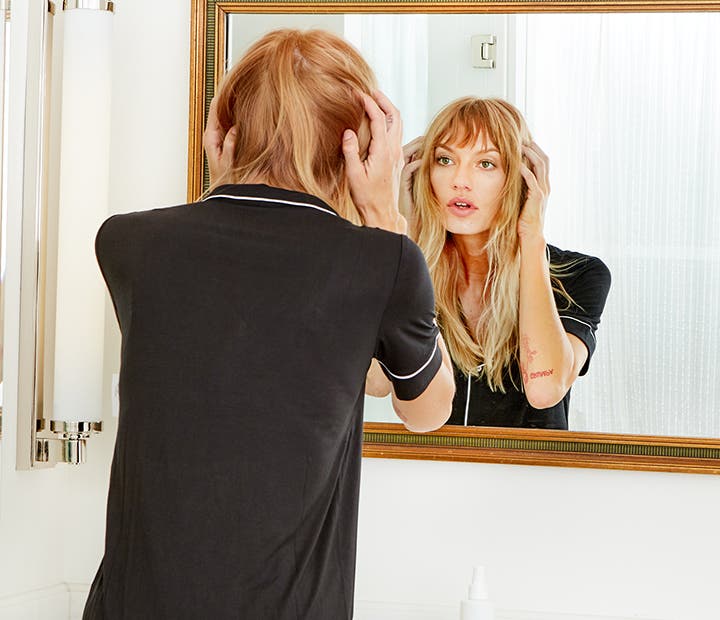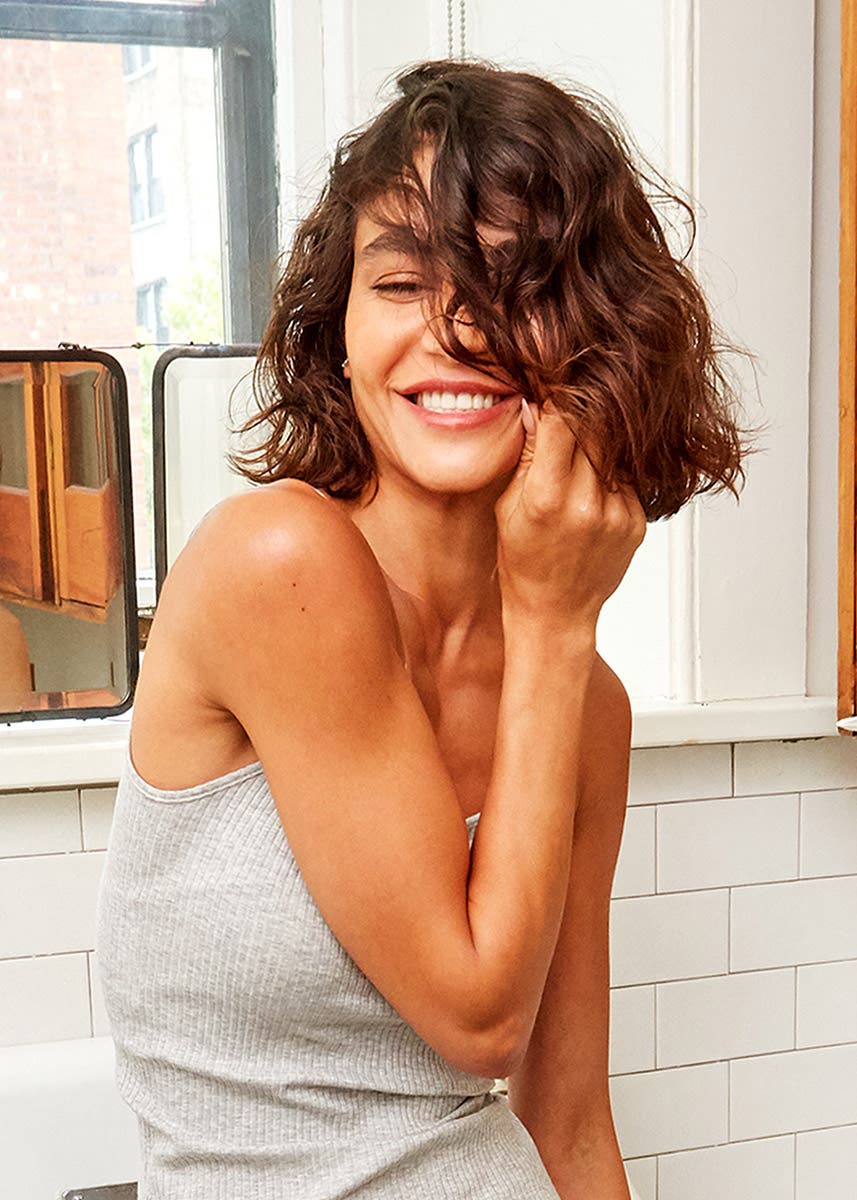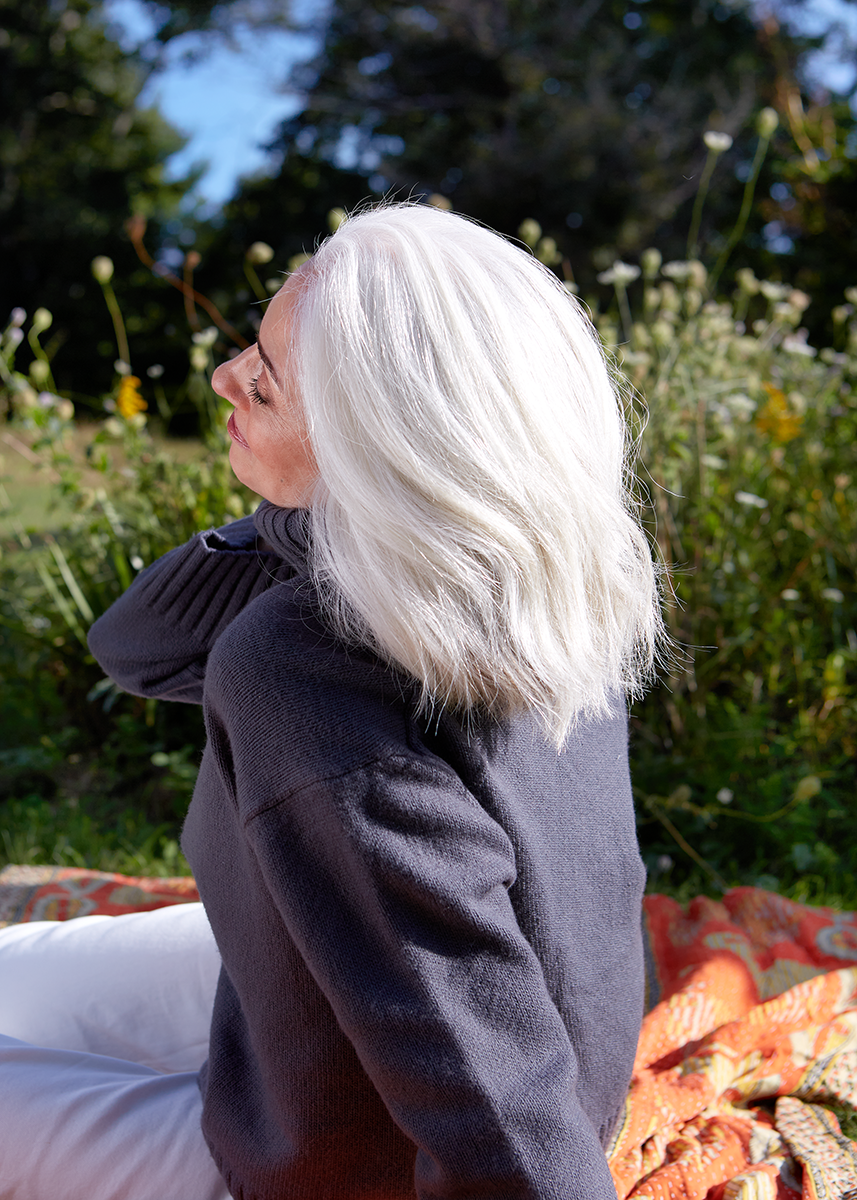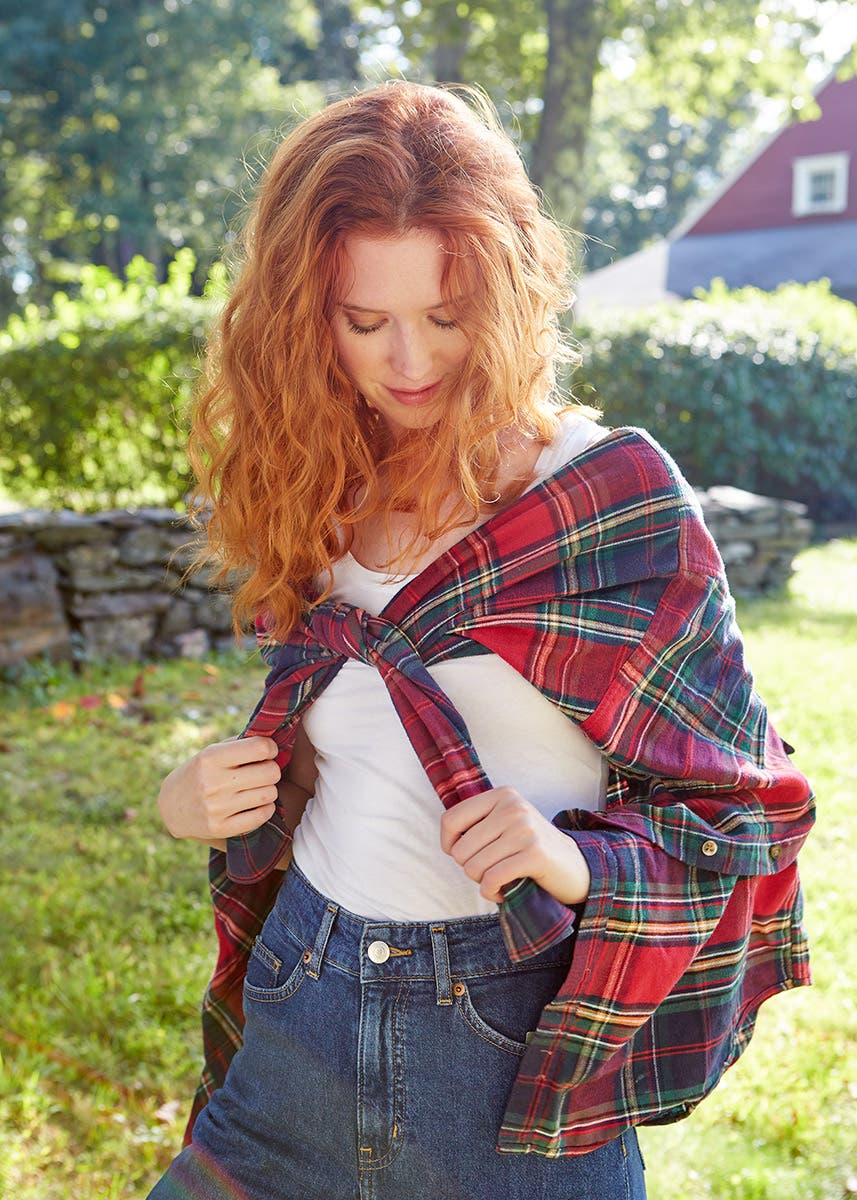Noticing Changes in Hair Texture? A Stylist’s Guide for What to Do Next

If your hair texture isn’t quite what it used to be, you’re certainly wondering why — and what to do about it.
“Why did my hair texture change?”
Anyone whose hair has started to look and feel like a stranger’s has probably asked themselves this question. It’s a tricky one, because there’s a pretty broad range t of change-in-hair-texture causes, from internal ones like aging to external ones like turning seasons.
What Do Changes in Hair Texture Mean?
The variety of causes behind changes in hair texture can make it hard to pin down what those changes mean. You might just need to switch up your hair care routine, or you might need to see a dermatologist.
Before you decide on a course of action, you have to figure out why your texture is different.
What Causes Hair Texture to Change?

Here are some of the causes to consider:
Cause 1: Aging
As we grow older, our hormones often fluctuate, and our hair type can as well. You might have spent the first 20 years of your life with thick, curly hair that is now growing in thin and straight, or vice versa. Your skin’s collagen production also tends to decrease as you age, leading to a loss of natural oils in the scalp that keep hair in good condition, among other critical functions.
Cause 2: Pregnancy
Once your pregnancy hormones wear off, your hair will probably return to its pre-pregnancy texture (though that’s not true 100% of the time).
Cause 3: Greying

Cause 4: Hair Treatments
Chemical treatments and heat styling alike can cause changes in hair texture. Coloring, relaxing, perming, blow drying on high heat, and flat ironing can all damage hair, leaving it dry and wiry.
Cause 5: Medication
Certain medications – like antidepressants or acne treatments – can affect your hair in a number of ways, including changes to texture.
Cause 6: Changing of Seasons
Extremely hot or extremely cold conditions can have a big impact on your hair texture. A cold winter can be especially harsh on hair, drying it out and making it brittle and rough to the touch, while prolonged exposure to the sun can do the same.Cause 7: Changes in Health
In some cases, a change in hair texture can signify a deeper issue. If you haven’t been doing anything differently to your hair and notice the texture has changed seemingly overnight, there might be an underlying medical issue – such as thyroid problems or anemia – at hand.
How to Maintain Hair Texture Naturally
Whether you’re experiencing a sudden change in hair texture or seeing a difference over time and want it to return to its previous state, there are plenty of ways to go about it.
Here’s how to change hair texture naturally:
Hair Texture Changes Caused by Aging, Greying, or Weather
Since scientists have yet to figure out how to stop the aging process, the most you can really do about aging, greying, or coarse hair is keeping it well-hydrated and well-moisturized. Make sure you’re not over-shampooing, or skip the shampoo altogether and go for a non-detergent cleanser like Hairstory New Wash Rich. Follow it up with deep conditioners or oils as needed, or opt for a leave-in moisturizing and styling product like Hairstory Hair Balm. Follow these steps for cold weather-related changes in hair texture as well.
Hair Texture Changes Caused by Chemical Treatments and Heat Styling
In this case, the simplest solution is to cut back on (or completely avoid) this part of your routine. If you can’t give up heat styling, try setting your tools on lower temperatures and always use a protective product like Hairstory Dressed Up Hair Protector. You should also try using cold water – or at least lukewarm water – when you wash, as using hot water can dehydrate your scalp and hair.
Hair Texture Changes Caused by Medication or Changes in Health
If you suspect your health or a new medication are behind a sudden change in hair texture, document when the changes began and how significant they are so you can discuss with your doctor and determine the cause. A new medication, or supplements and vitamins may be recommended.
No Matter What: Your Hair Is What You Eat (and Drink)
What you eat and drink affects your hair as much as it does your skin, and a lot of the same foods that keep your skin in good shape keep your hair looking great, too. Here are some foods that promote strong, healthy hair:
- Dark, leafy greens full of vitamin A and iron, like spinach and kale
- Guava, oranges, and other fruits full of vitamin C
- Greek yogurt and other foods with vitamin B5
- Orange vegetables with beta carotene like cantaloupe, carrots, mangoes, pumpkins, and sweet potatoes
- Protein-packed foods like poultry and eggs
- Salmon, canned tuna, and other fish with omega-3 fatty acids
- Zinc-heavy seafood such as crab, lobster, and oysters
If you have certain dietary restrictions, or simply don’t like some of the foods above, you can also look into supplements that feature the aforementioned ingredients. There’s also anecdotal evidence that biotin can help boost hair growth.
Once again, how to change your hair texture will, of course, depend on what’s causing it, and it’s important to remember that you might not be able to get that original texture back. But don’t fret! Different hair texture doesn’t necessarily mean bad hair texture – it just means you might have to shake things up to maintain your mane.

How to Improve Hair Texture
“Improving” hair texture really depends on what sort of hairstyles you’re ultimately hoping to achieve. Do you want more volume? Less frizz? ? More curl control??
Hairstory Undressed Texturizing Spray is great for boosting volume and giving you that “just got back from the beach” look. Meanwhile, if you’re wondering how to fix frizzy hair, and help curls coalesce, try Hair Balm.
As we said before, restoring hair texture isn’t always easy. Your hair has a mind of its own! Coily hair doesn’t necessarily want to be smooth and soft, and fine, straight hair doesn’t necessarily want to be curly. Come to terms with the fact that you may have to adjust your hair goals and embrace the hair you have –even if it’s not the hair you’ve always had.



